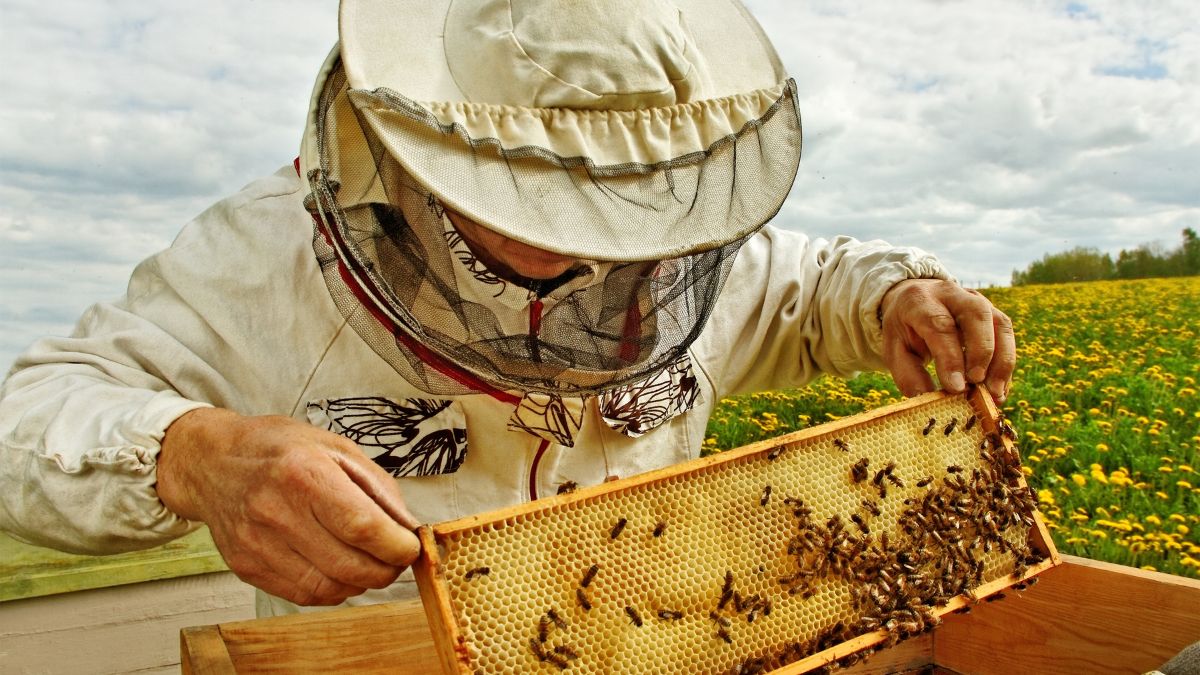Bee-Friendly Farming: Attracting and Maintaining Pollinators

Bee-friendly farming isn’t just about growing crops; it’s a gentle handshake with nature. Imagine a world where our farms buzz with the sounds of happy bees, flitting from flower to flower. This isn’t a distant dream, but a very real possibility. By creating environments that attract and support these vital pollinators, we’re not just helping bees; we’re securing the future of our own food supply. Let’s dive into the simple, yet powerful ways we can turn our farms into havens for bees, ensuring that every buzz and flutter contributes to a healthier, more vibrant ecosystem.
The Buzz About Bees: Why They Matter
Bees are fundamental to our ecosystem, playing a critical role in pollinating many of the crops and plants we rely on for food. Their work in pollinating fruits, vegetables, and nuts is essential for maintaining the balance of our ecosystems. Their decline poses a serious risk to our natural world and food supply. The reasons for their decline are complex, including habitat loss, climate change, pesticides, and diseases.
Understanding the importance of bees is crucial. Protecting and supporting them is not just an environmental issue but a necessity for sustaining human life. By taking steps to create a bee-friendly environment, we can help to ensure the survival of these vital pollinators and, in turn, our own future.
First Steps to a Bee-Friendly Farm
Creating a bee-friendly farm begins with understanding and meeting the needs of bees. This includes planting a variety of flowers and crops that provide nectar and pollen throughout the year. Diverse plantings ensure that bees have a consistent source of food, which is essential for their health and the health of the hive.
In addition, it’s important to reduce or eliminate the use of harmful pesticides that can be toxic to bees. Opting for natural pest control methods and embracing organic farming practices can have a significant positive impact on the health of bee populations. By creating a welcoming environment for these pollinators, we can help to ensure the health and productivity of our farms.
Choosing the Right Flowers: Bee Favorites
Bees are attracted to certain types of flowers more than others. Plants like lavender, borage, sunflowers, and clover are particularly appealing to bees because of their abundant nectar and pollen. Selecting a variety of these bee-friendly plants can help to attract and support healthy bee populations.
Incorporating native plants into your landscaping is also beneficial, as they are adapted to the local climate and soil conditions and are often preferred by native bee species. Native plants tend to be more resistant to local pests and diseases, which means they require fewer interventions and are easier to maintain.
Pesticides: Finding Safer Alternatives
One of the major threats to bees is the widespread use of pesticides. Choosing safer, organic alternatives or employing Integrated Pest Management (IPM) practices can significantly reduce the risk to bees. IPM involves using a combination of biological, cultural, physical, and chemical tools in a way that minimizes environmental damage and harm to bees.
Educating yourself and others in your community about the impacts of pesticides and the benefits of alternative methods is an important step in protecting bees. Sharing knowledge and resources can lead to a wider adoption of bee-friendly practices and a healthier environment for all.
Water Sources for Bees: Keeping Them Hydrated
Bees need access to water, but traditional water sources can be dangerous for them. Creating shallow water sources, such as bird baths or shallow dishes with rocks, provides bees with safe places to drink. Ensuring these water sources are shallow and have landing spots prevents bees from drowning. This is especially important during hot weather when bees need more water to cool their hives.
Regular maintenance of these water sources is key. Cleaning and refilling them regularly helps to ensure that bees always have access to fresh, clean water, which is vital for their survival.
Shelter for Bees: Creating a Safe Haven
Bees require safe places to nest and reproduce. Creating natural habitats, such as areas of wildflowers or undisturbed land, provides essential shelter for wild bees. These areas can include patches of bare soil, dead wood, and native vegetation, which are ideal for bees to nest and lay their eggs.
In addition, installing bee hotels or boxes can provide additional nesting sites for solitary bee species. These shelters can be particularly important in landscapes where natural nesting sites are scarce and can help to increase bee populations.
Seasonal Tips: Year-Round Bee Care
Caring for bees involves considering their needs throughout the year. This includes planting early-blooming flowers in the spring to provide nectar for bees emerging from hibernation, ensuring a steady supply of flowering plants throughout the summer, planting late-flowering plants in the autumn for food before winter, and protecting hibernation spots during the winter. Regularly maintaining these resources throughout the year is crucial for supporting a healthy bee population.
In the spring, focus on planting early-blooming flowers like crocuses, snowdrops, and willows to provide a source of nectar for bees as they emerge from hibernation. During the summer, ensure there is a variety of plants flowering to provide maximum foraging opportunities for bees. In the autumn, plant late-flowering plants such as asters and goldenrod to provide food for bees before the winter. Finally, in the winter, protect hibernation spots and consider planting winter-flowering plants to support bees that are active during the colder months.
Community Engagement: Spreading the Buzz
Engaging with your community is essential in promoting bee-friendly practices. Hosting workshops, creating educational materials, and involving schools and local clubs can help to raise awareness about the importance of bees and encourage others to take action. Sharing knowledge and resources can lead to more bee-friendly spaces and practices in your community.
Involving others in creating and maintaining bee-friendly spaces, such as gardens or educational programs, fosters a sense of community and shared responsibility. These collective efforts not only benefit bees but also strengthen community bonds and promote a healthier environment for all.
Monitoring Success: Keeping Track of Your Pollinators
Monitoring the bee population and their health on your farm is crucial for assessing the success of your bee-friendly practices. Regularly recording the types and numbers of bees, as well as their health and behavior, can help you to understand the impact of your efforts. This information can be used to adjust and improve your practices to better support bees.
Using simple tools like cameras or notebooks to track your pollinator visitors can provide valuable insights into which plants are most attractive to bees, how different practices affect bee health, and how the bee population on your farm is changing over time. This ongoing monitoring is key to ensuring the long-term success of your bee-friendly initiatives.
The Future of Farming: Beyond the Bee
Bee-friendly farming is about more than just supporting bees; it’s about creating a sustainable, biodiverse environment that benefits the entire ecosystem. This approach not only helps bees but also supports other pollinators, wildlife, and the overall health of the environment. By adopting these practices, farmers can contribute to healthier crops, a better environment, and a sustainable future for agriculture.
Embracing bee-friendly practices is a commitment to working in harmony with nature and ensuring the sustainability of our food systems. It represents a shift towards more sustainable, environmentally friendly farming practices that can have a positive impact on the planet and our future.

